A day in the life of…Heather, Tree Nursery Horticulture Trainee
Welcome to the next instalment of the Skills for Rewilding blog series, where Digital Marketing Trainee Alice gives us an insight into the traineeship programme. Here is a look at a day in the life of Heather, Tree Nursery Horticulture Trainee.
Starting in July, Heather is now a quarter of the way through the Skills for Rewilding traineeship. She is based at Dundreggan and works on the tree nursery, helping to grow more than 70,000 native trees a year. All of our trainees work four days a week, with the fifth day set aside for studying. Heather is working towards a Practical Horticulture Level 2 SVQ with Moray College UHI. This qualification will provide formal recognition of the knowledge and skills she is gaining, as well as contributing towards her future employability in a horticultural role.
Heather’s work day starts at nine every morning, after a one minute commute from her on-site accommodation. Most days start with watering, and today is no exception. It’s best to water in the morning or later in the afternoon when it’s cooler and the sun is low. Particularly on a sunny day, if the nursery team were to water saplings mid afternoon, the water can heat up and damage the tree’s young leaves. With tens of thousands of trees on the nursery, it’s a delicate balance working with the Scottish weather to ensure every sapling is getting the right amount of water.
Autumn is the time for seed collecting, and today the trainees are out with Jill, our Nursery Manager, to collect silver birch seed. Silver and downy birch easily hybridise, so it’s important to carefully identify each tree and ensure we are only collecting seed from true silver birches. Downy birch shoots are smooth and covered in soft hairs, whereas silver birch is hairless and has small dark warts. The bark on a silver birch tree is also noticeably whiter and more papery than its downy counterpart. A key identifying feature we are using today was the overall shape of the tree.
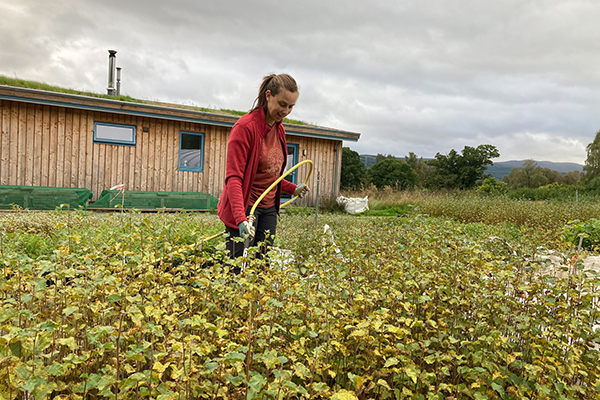
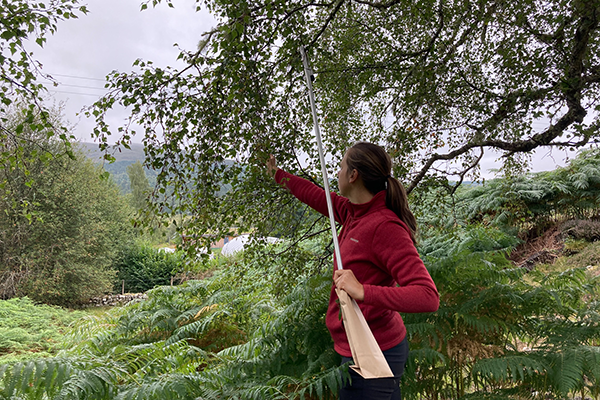
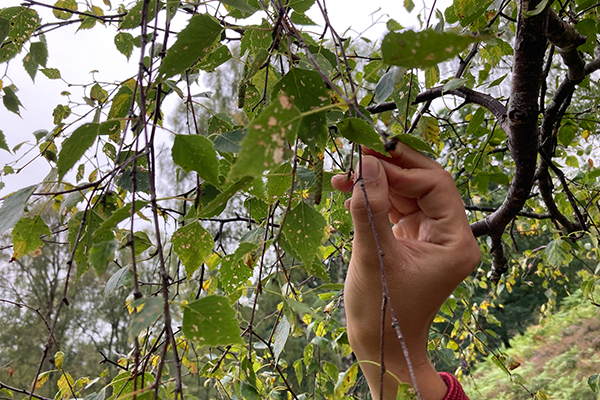
The Latin name for silver birch is Betula pendula, with betula meaning it is in the birch family and pendula describing the drooping, pendulous nature of the branches. Downy birch doesn’t droop in this way, so looking for the most pendulous trees ensured we are collecting from true silver birch. After identifying suitable trees, we collect the long, slim, cylindrical clusters of flowers known as catkins. Silver birch are wind pollinated, with pollen from male flowers being blown through the air to pollinate female flowers. We collect the catkins before this happens, allowing them to finish drying in our seed store – ready for planting at a later stage.
After lunch, it’s time for water checks. Each member of the nursery team is responsible for their own section. Heather combs through one of the polytunnels and an area of the hard standing, checking the moisture level of each pallet of trees. Feedback from water checks and the weather forecast are used to plan for additional watering that afternoon or for the following morning.

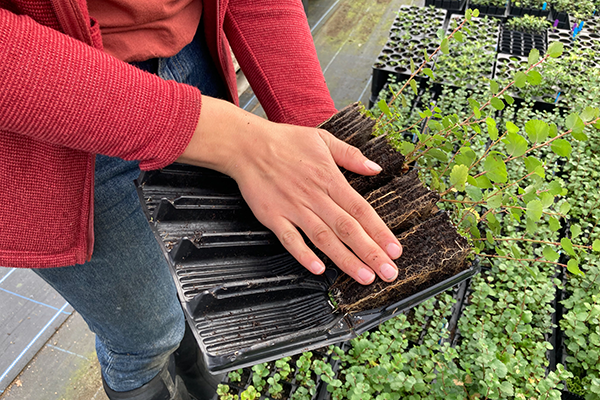
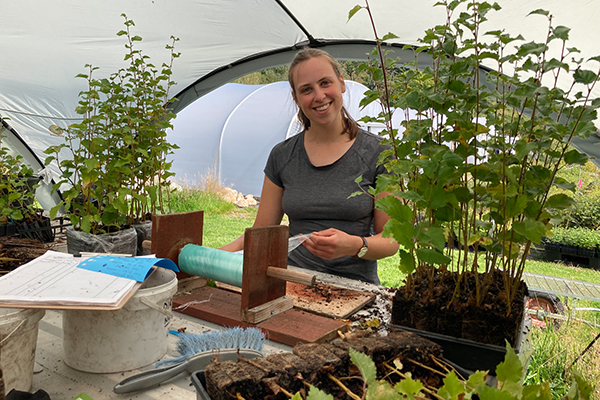
The final task for the day is packing. Today the nursery team are packing an order of 10,326 trees headed for Keppoch in Skye. The John Muir Trust placed this order of birch, rowan and aspen to help return a block of felled commercial Sitka spruce back to native broadleaf woodland. An order of this size takes a couple of weeks to pack, so the rest of the afternoon is dedicated to separating, grading and packaging these wee trees before their trip out west.
Keep an eye out for next month’s blog in Tree News, our monthly newsletter. Alice and Kat, our Rewilding Centre Education Manager, will be doing a rewilding Q&A with the P7s from Avoch Primary School.
The Skills for Rewilding traineeships have been made possible through funding provided by The National Lottery Heritage Fund as part of their “Skills for the Future” programme.

